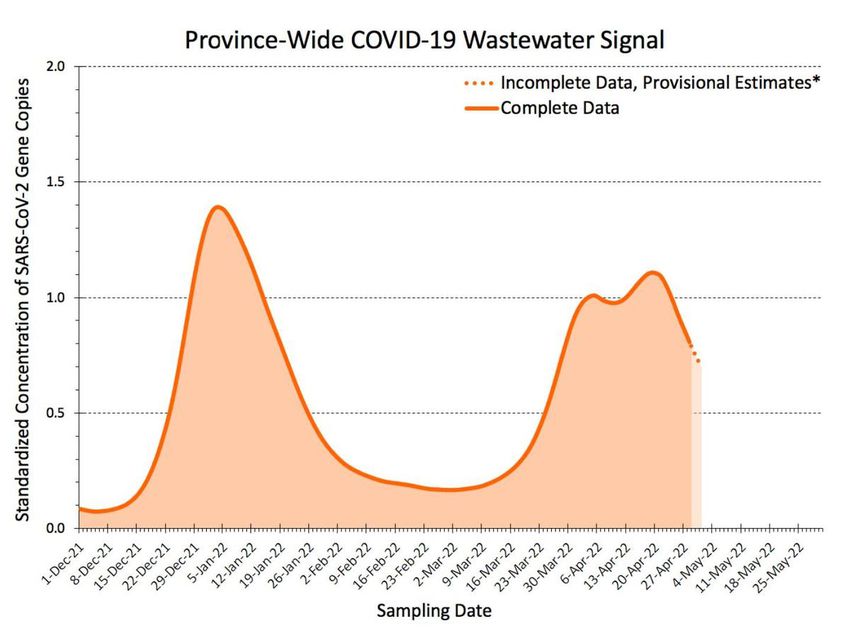Accumulated immunity in the population, the arrival of warmer weather and the continued use of masks amid Ontario’s sixth COVID-19 wave appear to be paying off.
The province’s COVID wastewater signal is down markedly from its recent spring peak last month when the Ontario COVID-19 Science Advisory Table estimated the province was seeing between 90,000 to 110,000 new infections per day.
This downward trend is also reflected in readings from 20 wastewater plants in the Greater Toronto Area, where the signal is stable at 12 plants and decreasing at seven as of Thursday. Only one, Port Darlington in Durham Region, is registering an increasing COVID signal.
And, according to the latest city of toronto datawastewater signals at all four wastewater treatment plants within the city limits are decreasing.
Claire J. Oswald, an associate professor in the department of geography and environmental studies at Toronto Metropolitan University, said the data for the city’s four treatment plants “looks encouraging” but noted that it’s a short-term trend for now.
“I would like to see that sustained for another week or so to really feel confident that it’s not going to bounce around still,” she said.
Access to polymerase chain reaction (PCR) tests in Ontario is still restricted to high risk groups and settings, so most cases are not being caught in the official provincial count.
That’s where wastewater surveillance comes in. The method gives scientists an early idea of how much infection is in a community before people show up in the hospital, through a viral footprint left behind in fecal matter when it’s flushed down the toilet.
For the last several months, wastewater surveillance has been a convenient — and necessary — tool for scientists and the public alike to get a sense of the rate of new infections in the province.
The science table’s scientific director, Dr. Peter Jüni, said the large percentage of the population — somewhere between 45 and 55 per cent — that has been infected since the beginning of December has contributed to accumulated immunity, which he calls the “most important” factor offering a lot of protection.
“That’s the most important factor helping to bring down infections. The next most important is the warmer weather and then masking,” he said.
But while new infections are down from the approximately 100,000 per day seen a few weeks ago, the province is still seeing somewhere between 60,000 and 85,000 estimated new daily infections, he said, meaning this is not a time to rest on our laurels.
“Someone was asking me the other day whether it’s a good idea to go for lunch indoors with friends. I said ‘no, it’s absolutely not a good idea.’ We’re still too early for that because we still have a really high force of infection,” Jüni said. “Right now, just waiting a few more weeks makes so much sense because we will likely see even further decline soon.”
JOIN THE CONVERSATION

